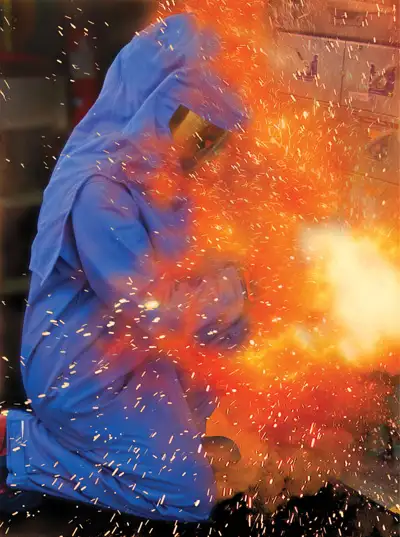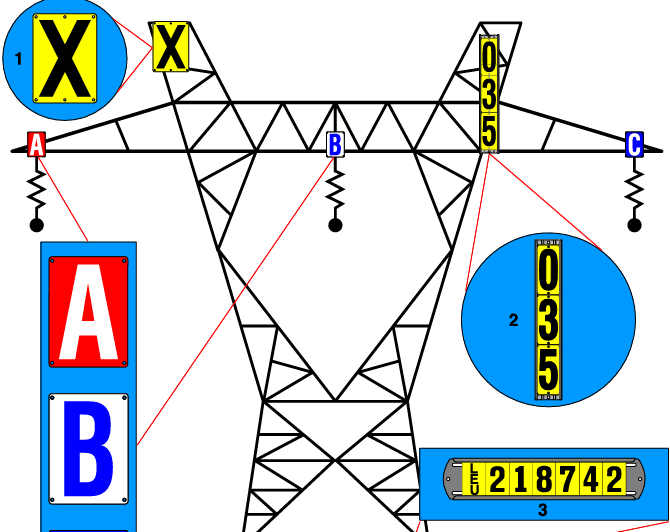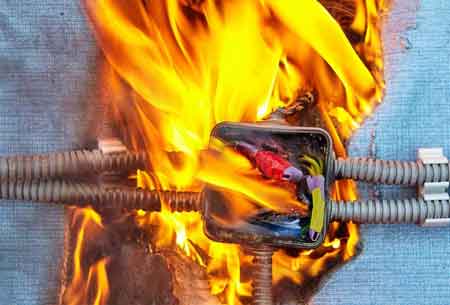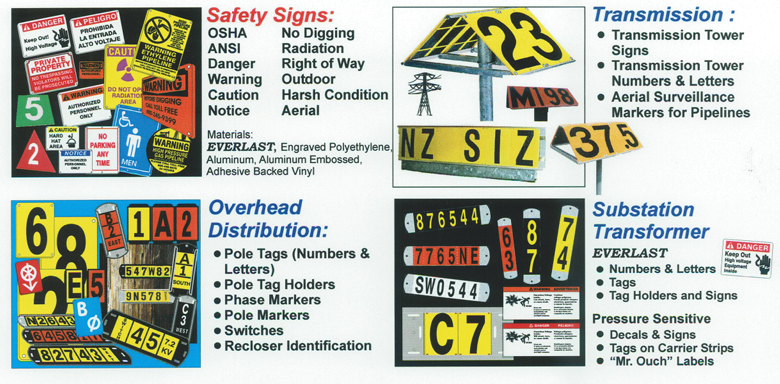Underground Transformer Explained
By R.W. Hurst, Editor

Power Transformer Maintenance Training
Our customized live online or in‑person group training can be delivered to your staff at your location.
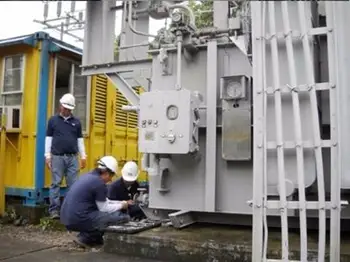
- Live Online
- 12 hours Instructor-led
- Group Training Available
Download Our OSHA 3075 Fact Sheet – Understanding Electrical Hazards in the Workplace

- Learn the effects of electric current on the human body
- Understand OSHA safety standards and protective devices
- Discover essential lockout/tagout and grounding practices
An underground transformer provides safe, efficient, and reliable voltage distribution in urban areas. Designed for compact installation, they reduce visual impact, enhance safety, and support power quality while integrating seamlessly with modern utility networks.
What is an Underground Transformer?
An underground transformer is an electrical device installed below ground to regulate voltage distribution safely and discreetly in residential, commercial, and utility systems.
✅ Provides compact, hidden installation for urban environments
✅ Ensures safety, power quality, and system reliability
✅ Supports residential, commercial, and utility distribution
In the intricate network of our electrical grid, transformers play a crucial role in converting high voltages from transmission lines to lower voltages suitable for distribution to homes and businesses. While the sight of towering overhead transformers atop utility poles is familiar to most, the underground transformer — including pad-mounted transformers, vault transformers, and submersible transformers — is a lesser-known but equally important variety beneath our feet. For a broader understanding of transformer applications in power distribution, see our overview of utility transformers.
Electrical Transformer Maintenance Training
Substation Maintenance Training
Request a Free Training Quotation
The underground transformer is essential in a modern electrical distribution system, providing a reliable and aesthetically pleasing solution for urban and suburban power distribution. It is an electrical device designed to convert high-voltage electricity to lower voltages suitable for residential and commercial use, and is typically installed below ground level. These devices are housed in robust, sealed enclosures that protect them from environmental factors and physical damage. They are typically used in areas where overhead lines are impractical or undesirable due to aesthetic, safety, or space considerations. To explore how underground devices fit into the larger grid, learn more about distribution transformers and their role in delivering safe, usable voltage to homes and businesses.
Test Your Knowledge About Utility Transformers!
Think you know Utility Transformers? Take our quick, interactive quiz and test your knowledge in minutes.
- Instantly see your results and score
- Identify strengths and areas for improvement
- Challenge yourself on real-world electrical topics
What are the Main Advantages?
They offer several distinct advantages over their overhead counterparts. Firstly, they are visually appealing, as they are hidden from sight and do not clutter the landscape. This makes them particularly desirable in urban areas and residential neighborhoods where aesthetics are a concern.
Secondly, underground devices are safer. They are less susceptible to damage from extreme weather events, vandalism, and accidental contact. This translates to increased reliability, as underground installations are less likely to experience outages due to external factors. In Virginia, for example, burying lines prevents around 2,500 outages annually. One of the most widely used underground solutions is the 3-phase pad-mounted transformer, designed for compact and secure urban installations.
Additionally, they are space-saving. By eliminating the need for overhead poles and lines, they free up valuable space, especially in densely populated areas. In Germany, 73% of medium-voltage and 87% of low-voltage cables are underground, demonstrating their widespread use in advanced distribution systems.
-
Aesthetics and Urban Planning: They are hidden from view, making them ideal for urban and suburban areas where visual clutter from overhead lines is undesirable. This enhances the overall aesthetic of the area and facilitates more effective urban planning.
-
Safety: By being installed below ground, these devices reduce the risk of accidents involving power lines, such as vehicle collisions or weather-related incidents like falling trees. This enhances public safety and reduces the frequency of power outages.
-
Reliability: They are less susceptible to weather-related disruptions, such as wind, ice, and lightning, which can frequently damage overhead lines. This results in a more reliable power supply.
What are the Challenges Associated with installing and maintaining them?
Despite their advantages, they present certain challenges. The initial installation cost is typically higher than that of overhead transformers, as it involves excavation, specialized equipment, and additional safety measures. Underground systems can cost up to 10× more per mile than overhead systems.
Maintenance can also be more complex and expensive. Accessing them requires excavation, which can be disruptive and time-consuming. Additionally, addressing issues such as overheating and moisture ingress necessitates specialized expertise and equipment.
-
Installation Costs: The initial installation is more expensive compared to overhead systems due to the need for excavation, specialized equipment, and additional labor.
-
Maintenance Access: Accessing them for maintenance or repairs can be challenging and time-consuming. It often requires excavation and careful handling to prevent damage to other underground utilities.
-
Environmental Considerations: Installing them can impact the surrounding environment, including soil and groundwater. Proper planning and environmental assessments are necessary to mitigate these impacts.
How Do Underground Transformers Differ in Design?
They are engineered differently from overhead ones to cope with the underground environment. They are typically sealed to prevent moisture penetration and often filled with insulating fluid, such as mineral oil or silicone, to provide dielectric strength and cooling. Furthermore, special attention is paid to heat dissipation, as the limited ventilation underground can lead to overheating if not adequately addressed. Many buried units share features with electrical substation transformers, which manage voltage conversion in confined spaces where safety and reliability are critical.
Underground transformers differ from overhead ones in several key aspects:
-
Enclosures: They are housed in sealed, weatherproof enclosures to protect them from moisture, dirt, and other environmental factors. These enclosures are designed to withstand the harsh conditions of being buried underground.
-
Cooling Systems: They often feature advanced cooling systems to dissipate heat generated during operation, as natural air circulation is not possible underground. These systems can include oil-filled compartments or forced air cooling mechanisms. Since insulation is a key part of protecting underground systems, our detailed article on transformer insulation outlines materials and techniques that prevent failures.
-
Compact Design: To fit in confined underground spaces, these transformers are designed to be more compact and robust. This compactness also helps in reducing the excavation size required for installation.
What Safety Precautions Should Be Taken When Working Near Underground Transformers?
Working near one demands strict adherence to safety protocols. Before any excavation, it is imperative to obtain the necessary permits and accurately locate the device and associated cables. De-energizing the equipment and ensuring proper grounding are crucial steps before commencing any work. Additionally, wearing appropriate personal protective equipment (PPE), such as safety glasses, gloves, and flame-resistant clothing, is essential to mitigate risks.
FREE EF Electrical Training Catalog
Download our FREE Electrical Training Catalog and explore a full range of expert-led electrical training courses.

- Live online and in-person courses available
- Real-time instruction with Q&A from industry experts
- Flexible scheduling for your convenience
-
Proper Identification: Before commencing any excavation work, it is essential to accurately locate underground transformers and other utilities using detection equipment or consulting utility maps.
-
Use of Protective Gear: Workers should wear appropriate personal protective equipment (PPE), such as insulated gloves, boots, and safety helmets, to protect against electrical hazards.
-
Adherence to Regulations: Follow local safety regulations and guidelines for excavation and electrical work to ensure safety and compliance.
-
Training and Awareness: Workers should be adequately trained in handling electrical equipment and aware of the potential risks.
What are the Different Types of Underground Transformers Available?
-
Pad-Mounted: These are installed at ground level on a concrete pad, with underground electrical connections. They are commonly used in residential areas and commercial complexes.
-
Vault Transformers: Installed in underground vaults or chambers, these devices are typically used in densely populated urban areas where space is limited. They provide high capacity and reliability.
-
Submersible Transformers: Designed to operate while submerged in water, these devices are used in areas prone to flooding or with high water tables. Their sealed design prevents water ingress and ensures reliable operation.
Comparison: Underground vs Overhead
Underground and overhead transformers differ in several critical ways, and the choice often comes down to balancing cost, reliability, and aesthetics.
Cost: Underground distribution can cost up to 10× more per mile than overhead construction due to excavation, specialized equipment, and labor. Overhead systems remain the more economical option for large-scale expansion.
Outages and Reliability: In Virginia, burying lines prevents around 2,500 outages annually, proving that underground systems are more resilient to wind, ice, and falling trees. Overhead transformers, by contrast, are highly exposed to storm damage and environmental wear.
Maintenance: Overhead units are easier and faster to repair because they’re accessible on poles. They require excavation, which makes repairs slower and more expensive; however, they tend to suffer fewer failures overall.
Safety: Underground systems reduce risks of vehicle collisions, fire hazards, and accidental contact with energized lines. Overhead systems are more vulnerable to human error and weather-related hazards.
Visual Impact: They are concealed from view, thereby preserving the urban and suburban aesthetics. Overhead lines and pole-mounted units often create clutter and face restrictions in planned communities.
Flexibility: Overhead lines are easier to reroute, extend, or upgrade, while underground infrastructure is more permanent once installed.
Underground vs Overhead Transformers: Key Differences
| Factor | Underground Transformer | Overhead Transformer |
|---|---|---|
| Cost | Up to 10× more expensive per mile (excavation & labor) | Lower upfront cost, economical for expansion |
| Reliability | Fewer outages (e.g., 2,500 prevented annually in Virginia) | Highly exposed to storms, wind, ice, lightning |
| Maintenance | Harder access, excavation required, slower repairs | Quick access on poles, easier repairs |
| Safety | Reduced risk of accidents, collisions, fire hazards | Higher risk from contact, vehicle strikes, weather |
| Visual Impact | Hidden, improves urban and suburban aesthetics | Visible lines and poles, urban clutter |
| Flexibility | More permanent, harder to reroute or expand | Easier to reroute, upgrade, or extend |
Frequently Asked Questions
What is a pad-mounted transformer?
A pad-mounted transformer is a type of underground transformer installed on a concrete pad in a steel cabinet, safely stepping down primary voltage for local distribution.
How much more expensive is underground vs overhead?
Underground installations can cost up to 10 times more per mile than overhead lines due to excavation, specialized equipment, and labor.
Are they more reliable in storms?
Yes. Because they are protected below ground, they are far less susceptible to wind, ice, or falling trees, resulting in fewer outages during extreme weather.
Related Articles





